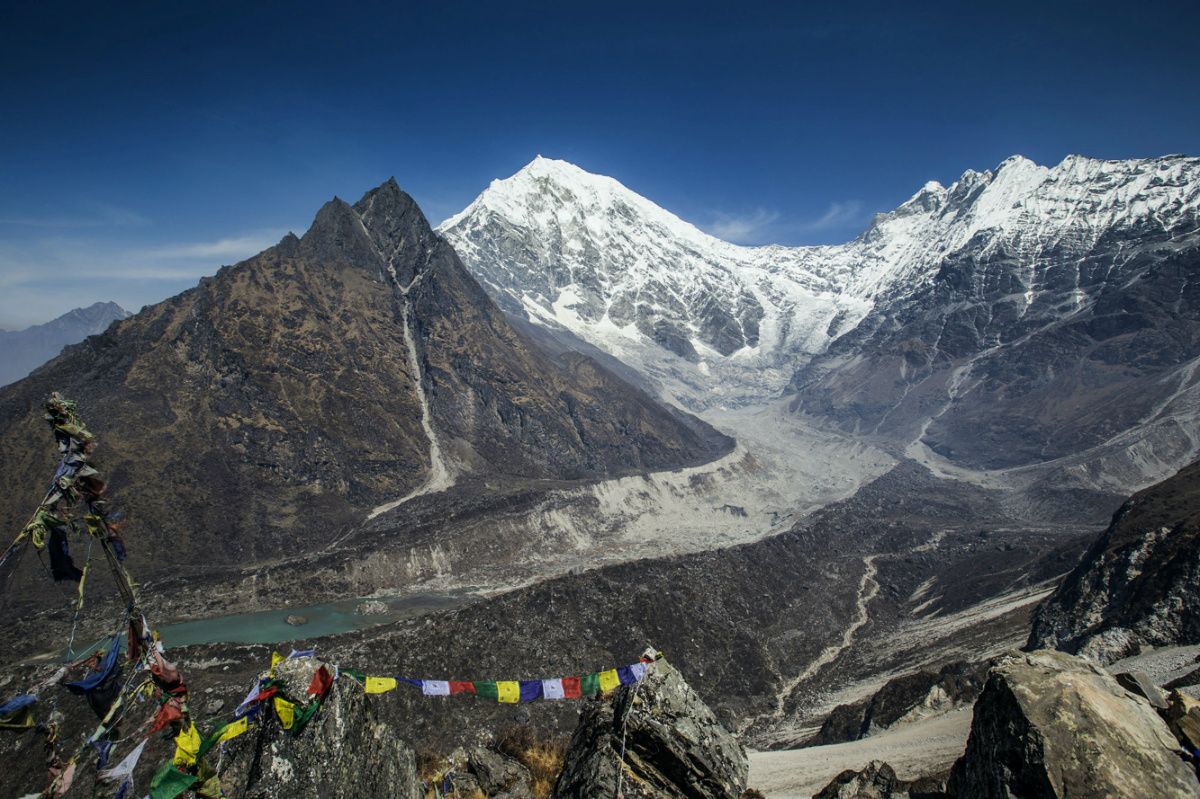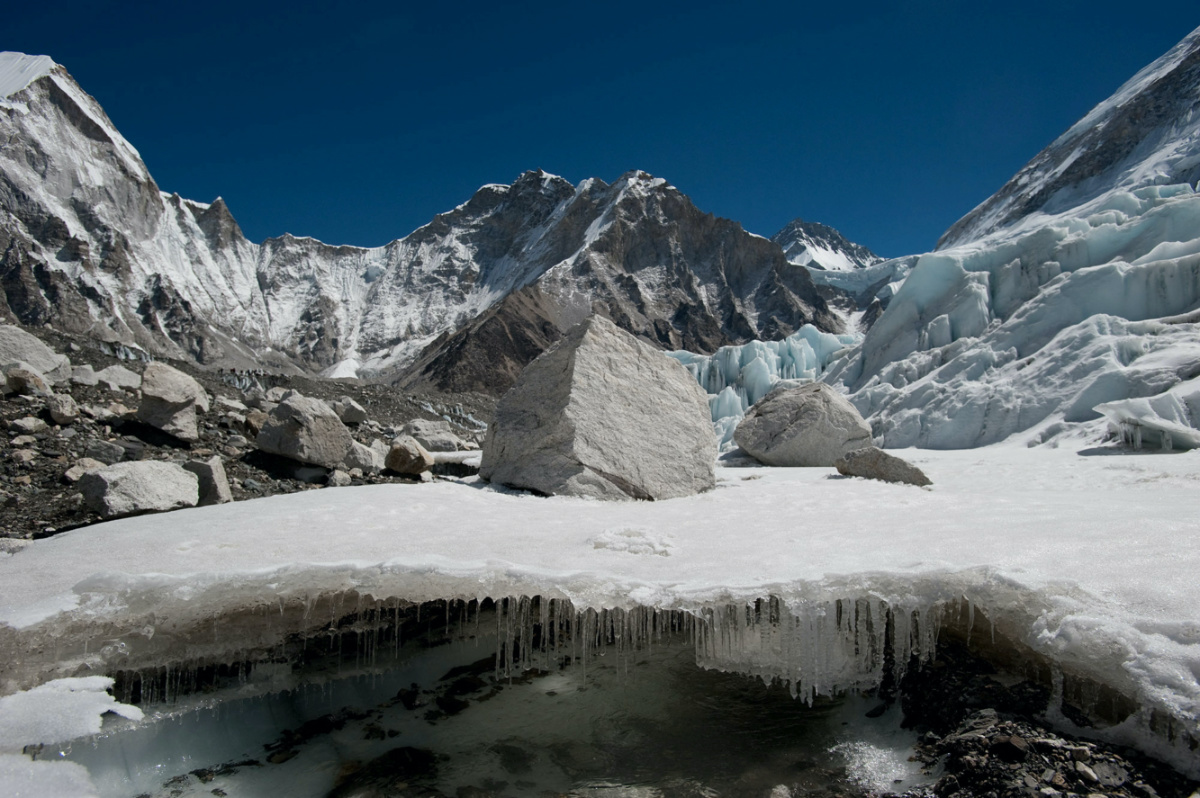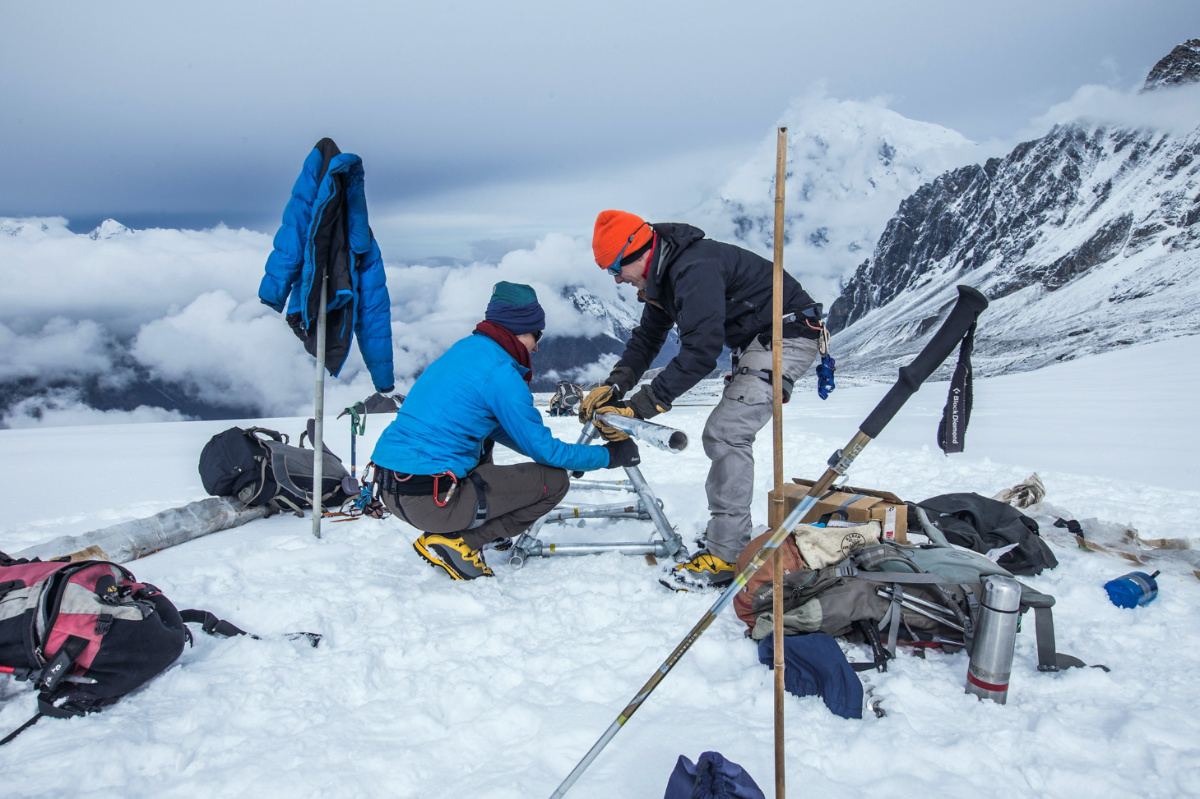Glaciers in Asia’s Hindu Kush Himalaya could lose up to 75 per cent of their volume by century’s end due to global warming, causing both dangerous flooding and water shortages for the 240 million people who live in the mountainous region, according to a new report.
A team of international scientists has found that ice loss in the region, home to the famous peaks of Everest and K2, is speeding up. During the 2010s, the glaciers shed ice as much as 65 per cent faster than they had in the preceding decade, according to the assessment by the Kathmandu-based International Centre for Integrated Mountain Development (ICIMOD), an intergovernmental scientific authority on the region.
“We’re losing the glaciers, and we’re losing them in 100 years’ time,” said Philippus Wester, an environmental scientist and ICIMOD fellow who was the lead author of the report.

General view at Langtang National Park, Nepal in this undated handout image. PICTURE: Jitendra Raj Bajracharya/ICIMOD/Handout via Reuters
The Hindu Kush Himalaya stretches 3,500 kilometres across Afghanistan, Bangladesh, Bhutan, China, India, Myanmar, Nepal and Pakistan.
At 1.5 degrees Celsius or two degrees of warming above preindustrial temperatures, glaciers across the entire region will lose 30 to 50 per cent of their volume by 2100, the report said.
But where glaciers will melt most depends on location. At three degrees of warming – what the world is roughly on track for under current climate policies – glaciers in the Eastern Himalaya, which includes Nepal and Bhutan, will lose up to 75 per cent of their ice. At four degrees of warming, that ticks up to 80 per cent.
The full picture
Scientists have struggled to assess how climate change is affecting the Hindu Kush Himalaya. Unlike the European Alps and North America’s Rocky Mountains, the region lacks a long historical record of field measurements that reveal whether glaciers are growing or shrinking.
“There was always some uncertainty in the Himalaya – are they really melting?”, said Wester.
In 2019, the United States declassified spy satellite images of the region’s glaciers dating back to 1970, providing a new scientific baseline.

Water forms under Nepal’s Khumbu glacier as the ice melts in this undated handout image. PICTURE: Alex Treadway/ICIMOD/Handout via Reuters
Further advances in satellite technology in the past five years, alongside bolstered field efforts, have buoyed scientists’ understanding of the changes underway. The report draws on data running through December, 2022.
“While the knowledge of the Himalayan glaciers is still not as good as the Alps, it’s now comparable to other regions like the Andes,” said Tobias Bolch, a glaciologist with Graz University of Technology in Austria unaffiliated with the report.
Compared with a 2019 ICIMOD assessment of the region, “there’s a much higher level of confidence now in these findings,” said Wester. “We have a better sense of what the loss will be through to 2100 at different levels of global warming.”
Livelihoods at risk
With this newfound understanding comes grave concern for the people living in the Hindu Kush Himalaya.
The report found water flows in the region’s 12 river basins, including the Ganges, Indus, and Mekong, are likely to peak around mid-century, with consequences for the more than 1.6 billion people who depend on this supply.
“While it may sound like we’ll have more water because glaciers are melting at an increased rate…too frequently it will arise as floods instead of a steady flow,” said Wester. Past peak water, supplies will eventually dwindle.

Researchers build a weather station on Yala glacier, Nepal in this undated handout image. PICTURE: Jitendra Raj Bajracharya/ICIMOD/Handout via Reuters
Many high mountain communities use glacial water and snowmelt to irrigate crops. But the timing of when snow falls has become more erratic, and there’s less than there used to be.
We rely on our readers to fund Sight's work - become a financial supporter today!
For more information, head to our Subscriber's page.
“We’ve had…huge numbers of yak deaths because during summer they go to higher pastures,” said report co-author Amina Maharjan, a senior specialist in livelihoods and migration at ICIMOD. If the snow falls too soon, “the entire area is covered in snow and they don’t have grass to graze”.
People are now moving away from mountain communities to earn income elsewhere, she said.
Melting glaciers also pose a danger to downstream communities. Runoff pools in shallow lakes, held back by rocks and debris. The risk comes when a lake overfills, bursting through its natural barrier and sending a torrent of water rushing down mountain valleys.
Governments are trying to prepare for these changes. China is working to shore up the country’s water supplies. And Pakistan is installing early warning systems for glacial lake outburst floods.






